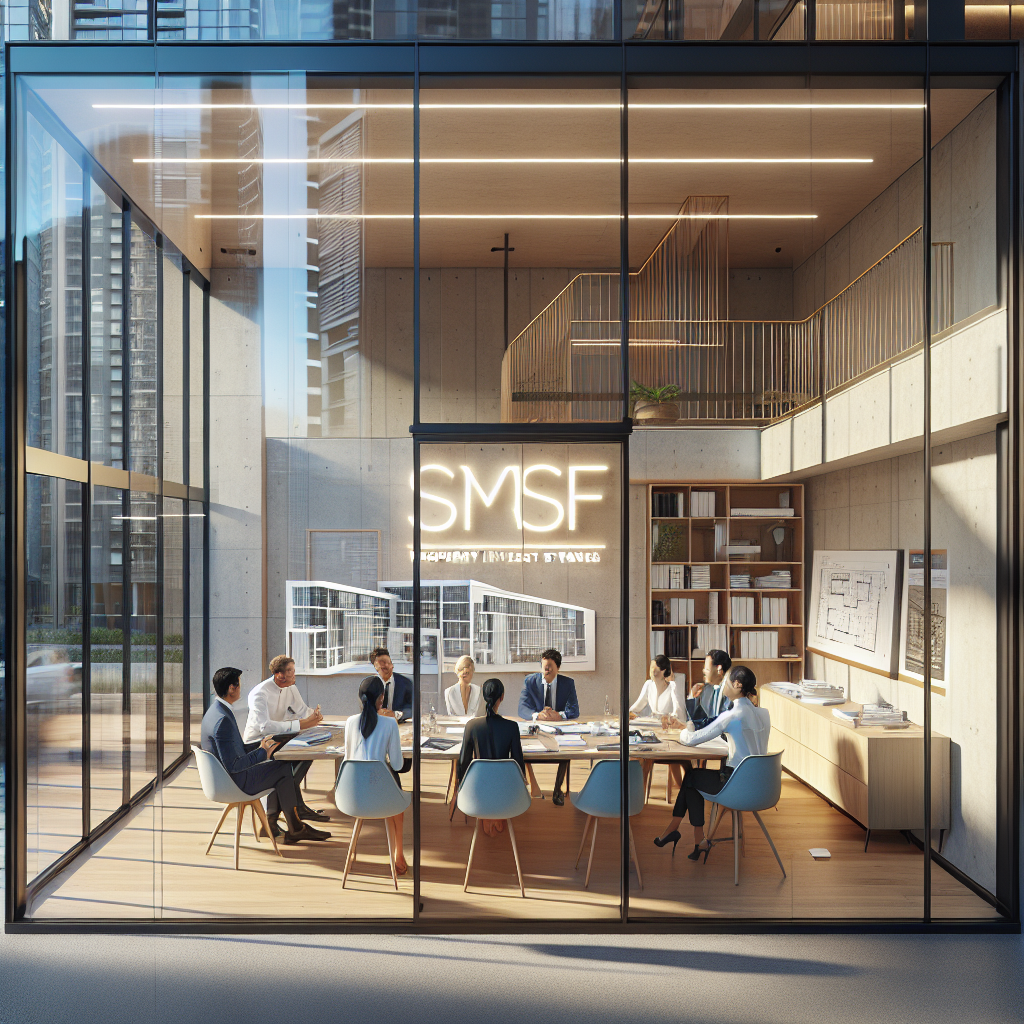For business owners and property investors considering retirement strategies, transferring business real property to a Self-Managed Superannuation Fund (SMSF) presents an intriguing option. This strategy has gained popularity among entrepreneurs seeking to maximize their retirement savings while potentially enjoying tax advantages. But is a business real property transfer to SMSF truly a smart financial move, or does it create more compliance headaches than it’s worth?
The decision to transfer business real property into your SMSF involves navigating complex regulations, understanding tax implications, and ensuring ongoing compliance with strict Australian Taxation Office (ATO) requirements. When executed correctly, this strategy can offer significant benefits. However, missteps can lead to severe penalties and potentially compromise your retirement savings.
Understanding SMSFs and Their Property Investment Advantages
A Self-Managed Superannuation Fund is a private superannuation fund that you control yourself, rather than having a professional fund manager handle your retirement investments. As an SMSF trustee, you determine the investment strategy, select specific assets, and maintain direct control over your retirement savings.
SMSFs offer unique advantages when it comes to property investment:
Direct control: Unlike retail or industry super funds, SMSF trustees have complete decision-making authority over their investments, including property selection, management, and disposal.
Tax efficiency: SMSFs pay a maximum of 15% tax on income during the accumulation phase, and potentially 0% tax once members enter the pension phase. This creates a tax-advantaged environment for holding income-producing assets like business real property.
Asset protection: Assets held within an SMSF generally receive protection from creditors in the event of personal financial difficulties or bankruptcy.
Estate planning benefits: SMSFs provide greater flexibility in how retirement benefits are distributed to beneficiaries upon a member’s death.
For business owners particularly, the ability to transfer business real property to an SMSF can create strategic opportunities. It allows you to effectively “wear two hats” – as both property owner (via your SMSF) and tenant (through your business). Your business can pay market-rate rent to your SMSF, creating a reliable income stream for your retirement fund while the property potentially appreciates in value.
As one SMSF investor explains: “Transferring my business premises to my SMSF has allowed me to build retirement wealth while operating my business. The rental income flows into my super, and I maintain control over a property that’s crucial to my business operations.”
The Legal Process of Business Real Property Transfer to SMSF
Transferring business real property to an SMSF involves several critical steps and considerations:
1. Confirming Property Eligibility
Not all property qualifies as “business real property.” The ATO defines it as real property used wholly and exclusively for business purposes. This typically includes:
- Commercial offices
- Retail premises
- Industrial warehouses
- Agricultural land actively used for farming
A property with mixed use (such as a shop with an upstairs residence) generally won’t qualify unless the residential portion is physically separate and minimal in proportion to the business use.
2. In-Specie Transfer Process
An in-specie transfer refers to contributing an asset directly to your SMSF rather than selling it and contributing cash. This process requires:
- Professional valuation from an independent, qualified valuer
- Formal resolution by SMSF trustees accepting the contribution
- Transfer documents prepared by your solicitor
- Lodgment with the relevant state or territory authority
- Payment of applicable stamp duty (though exemptions may apply in some jurisdictions)
Documentation must be meticulous. The property transfer must be properly recorded in the fund’s investment strategy, minutes of trustee meetings, and financial statements. Any failure to maintain proper documentation can create compliance issues during ATO audits.
3. Contribution Cap Considerations
It’s crucial to understand that a business real property transfer to SMSF constitutes a contribution to your super. This means it counts toward your contribution caps – either concessional or non-concessional, depending on how you structure the transaction.
Exceeding these caps can trigger excess contributions tax. For the 2023-2024 financial year, the non-concessional contributions cap is $110,000 per year (or up to $330,000 using the bring-forward provisions if eligible). If your property’s value exceeds these limits, you’ll need strategic planning to manage the transfer effectively.
Navigating ATO Compliance Requirements
The ATO maintains strict oversight of SMSFs, with property transactions receiving particular scrutiny. When transferring business real property to an SMSF, compliance with superannuation laws is non-negotiable:
The Sole Purpose Test
Your SMSF must be maintained solely to provide retirement benefits to members. The business real property transfer to SMSF must align with this purpose and be part of a documented investment strategy. Using SMSF assets for current-day benefits (like transferring a holiday home you personally use) violates this test and can result in the fund becoming non-compliant.
Related Party Transaction Rules
While most acquisitions from related parties are prohibited, business real property represents a key exception. However, several conditions apply:
- The property must be acquired at market value
- The transaction must be conducted on arm’s-length terms
- Proper documentation must support the transaction
In-House Asset Limitations
Generally, an SMSF cannot invest more than 5% of its total assets in in-house assets (investments involving related parties). However, business real property leased to a related party operating a business is specifically excluded from this limitation – making it a valuable strategic opportunity.
Borrowing Restrictions
If your SMSF needs financing to complete the property acquisition, this must be structured as a Limited Recourse Borrowing Arrangement (LRBA). These arrangements have their own complex compliance requirements, including:
- Establishing a separate holding trust
- Ensuring the loan is limited recourse in nature
- Meeting specific repayment terms and conditions
As one compliance expert notes: “The ATO has increased scrutiny of property transactions within SMSFs. Trustees should expect that any business real property transfer to SMSF will potentially be reviewed, so immaculate record-keeping and adherence to regulations is essential.”
Tax Considerations: Potential Benefits and Pitfalls
The tax implications of a business real property transfer to SMSF represent both opportunities and challenges:
Capital Gains Tax (CGT)
When transferring property to your SMSF, CGT may apply on any increase in the property’s value since you acquired it. However, small business CGT concessions may be available to reduce or eliminate this tax liability if you meet specific eligibility criteria.
Importantly, once the property is held within the SMSF, future capital gains are taxed at the superannuation rate of 15%, or potentially 10% if the asset is held for more than 12 months. Even better, if the property is sold when the SMSF is in pension phase, no CGT is payable at all.
Income Tax Benefits
Rental income from the property is taxed at just 15% within the SMSF during accumulation phase, compared to your marginal tax rate (potentially up to 45% plus Medicare levy) if held personally. In pension phase, this tax rate drops to zero.
For a business owner renting their premises from their SMSF, this creates a circular benefit: rental payments are tax-deductible business expenses while simultaneously growing retirement savings in a tax-advantaged environment.
Stamp Duty Considerations
Stamp duty represents a significant cost when transferring property. However, some states and territories offer concessions or exemptions for transfers to SMSFs under specific circumstances. For example, in some jurisdictions, a fixed duty of $500-$750 may apply instead of the full ad valorem rate.
Research by Aries Financial indicates that stamp duty savings can sometimes offset other transaction costs, making the business real property transfer to SMSF more financially viable. However, these exemptions vary by jurisdiction and change periodically, so current professional advice is essential.
Superannuation Surcharge and Division 293 Tax
High-income earners should consider the potential impact of Division 293 tax, which applies an additional 15% tax on concessional contributions for individuals earning over $250,000. This can affect how you structure the property transfer to minimize tax implications.
Practical Guidance for Effective Property Transfers
Successfully executing a business real property transfer to SMSF requires careful planning and professional assistance:
1. Assemble Your Advisory Team
This complex transaction requires input from:
- Financial advisor with SMSF expertise
- Accountant familiar with SMSF tax strategies
- Commercial lawyer experienced in superannuation property transfers
- Licensed property valuer
- Possibly a mortgage broker specializing in SMSF lending (if financing is required)
2. Conduct Thorough Due Diligence
Before proceeding:
- Confirm the property meets the “business real property” definition
- Assess your contribution cap position and any potential excess contributions
- Analyze cash flow implications (can the SMSF afford ongoing property expenses?)
- Review your SMSF trust deed to ensure it permits property investment
- Consider future business plans (will you need to sell the property soon?)
3. Document Everything Meticulously
Maintain comprehensive records including:
- Independent valuation reports
- Trustee resolutions approving the acquisition
- Sales contracts and transfer documents
- Evidence of market-rate transactions
- Updates to your investment strategy justifying the acquisition
4. Plan for Ongoing Compliance
After the transfer:
- Ensure all lease arrangements are formal, documented, and at market rates
- Pay all rent on time and maintain proper rent records
- Conduct regular property valuations (at least every three years)
- Factor property expenses into your SMSF’s cash flow planning
- Revisit the arrangement if business circumstances change
Making the Right Decision for Your Future
The question remains: is a business real property transfer to SMSF a smart tax move or a compliance nightmare? The answer depends on your specific circumstances, long-term objectives, and willingness to maintain strict compliance.
At Aries Financial, we believe that strategic property acquisition through an SMSF can be a powerful wealth-building tool when approached with integrity and expertise. As Australia’s Trusted SMSF Lending Specialist, we’ve seen firsthand how business owners can successfully leverage their retirement funds to create win-win situations for both their businesses and long-term financial security.
The key to success lies in thorough preparation, professional guidance, and ongoing diligence. A business real property transfer to SMSF is not a set-and-forget strategy; it requires active management and regular compliance reviews.
When aligned with a comprehensive retirement plan and supported by expert advice, transferring business real property to your SMSF can transform a necessary business expense (rent) into a retirement-building strategy. The tax advantages, potential for capital growth, and business continuity benefits create compelling reasons to consider this approach.
However, this strategy isn’t suitable for everyone. Those unwilling or unable to maintain strict compliance with superannuation laws may find the ongoing requirements burdensome. The initial costs and complexity can also be deterrents for some.
In the end, empowering yourself with knowledge and seeking specialized SMSF lending and investment advice will help you determine whether a business real property transfer to SMSF represents an opportunity or obstacle on your wealth creation journey. With proper planning and execution, what might initially appear as a compliance challenge can transform into a smart tax strategy supporting both your business and retirement goals.
Need professional advice about SMSF property transfers? Contact our team of specialists today to discuss your unique situation and explore the possibilities for your retirement strategy.


